If you have raised beds in your garden, you’ll eventually be faced with the decision of what to put under raised beds in terms of lining. There are many options to choose from, and it’s important to explore which will be best for your situation.
Most experts recommend lining raised beds–to prevent weeds or chemicals in treated wood from leaching into soil. Common materials for lining raised beds are: landscape fabric, plastic, weed barrier, gravel, & cardboard. Of these materials, plastic is typically not recommended.
Each of these materials has benefits and drawbacks. So in the end, it will be up to you to decide what makes the most sense for you. You’ll want to consider cost, durability, water retention/drainage, the climate in your area. And also, what kinds of plants you want to grow, and the ability of nutrients to travel to your plants.
Should you line a raised bed?
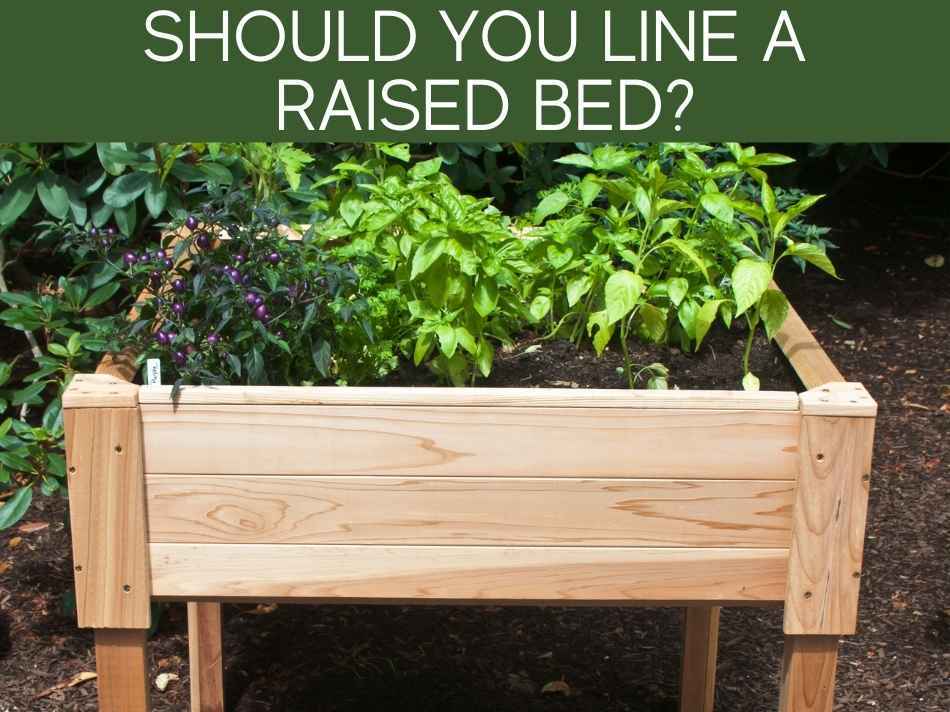
To line or not to line: that is the question.
There are so many different ways to garden and different opinions in the gardening community. So the answer is complicated – some gardeners prefer to skip lining their garden beds and let the soil do its thing.
For the most part, though, experts recommend lining your garden bed.
There are major benefits to lining your garden bed, such as pest and weed prevention, insulation, and water drainage.
There are drawbacks too, so it’s really up to you to decide whether or not to line your raised beds.
Weighing the benefits and drawbacks is always important when you’re making a gardening decision.
So let’s go into more detail about the pros and cons.
If you’re thinking of extending the growing season, here’s our full article on gardening in winter in raised beds.
Benefits of lining
There are definite benefits to lining your garden bed.
Most gardeners find that the benefits outweigh the drawbacks. But in the end, it’s your garden, and it’s up to you.
Here are some of the benefits of lining.
Soil insulation
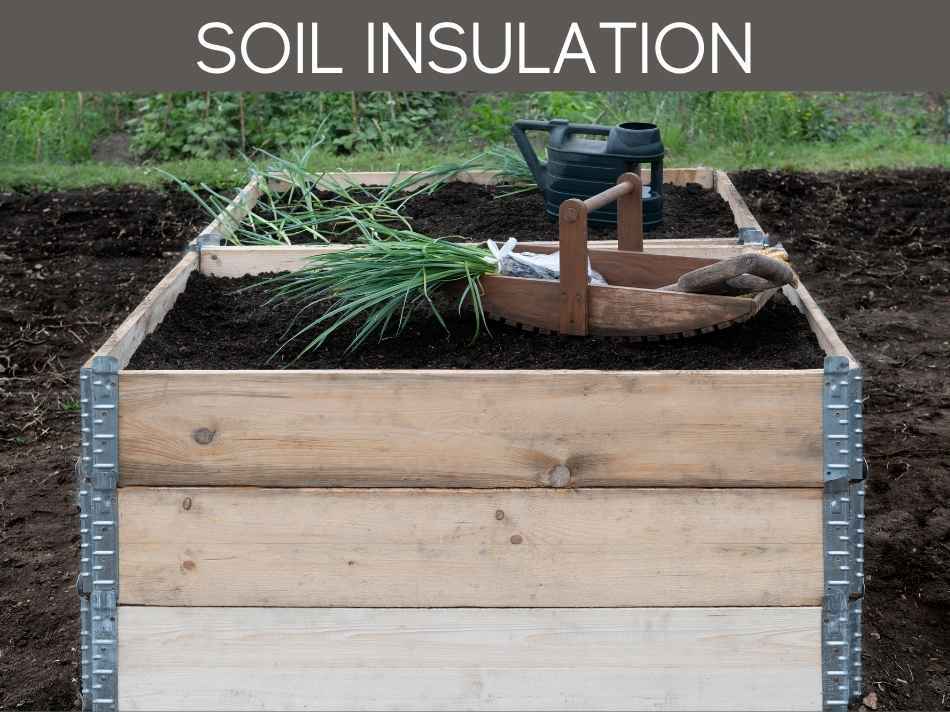
Placing some sort of liner between the bottom of your bed and the soil will provide insulation for both extremely hot and cold temperatures.
When it’s hot outside, your lining can keep your soil–and in turn your plants–cool enough to withstand the heat.
The same is true for colder temperatures. Your lining can retain heat and keep your plants protected and could save you some money on heat lamps.
This is great if you live in an area where temperatures fluctuate a fair amount.
The system isn’t perfect.
So you’ll still need to take into account which plants grow best in your area and climate and also give your plants the right ratio of sun to shade.
Pest control
For many gardeners, pests are the number one concern and the reason why their plants don’t last as long as they’d hope.
If you live in an area where pests are common and are likely to dig up your plants, using a liner can help keep them out.
It’s not a guarantee, since pests are known for their persistence.
But gardeners who do line their beds typically see a decrease in the amount of pest damage.
Weed prevention
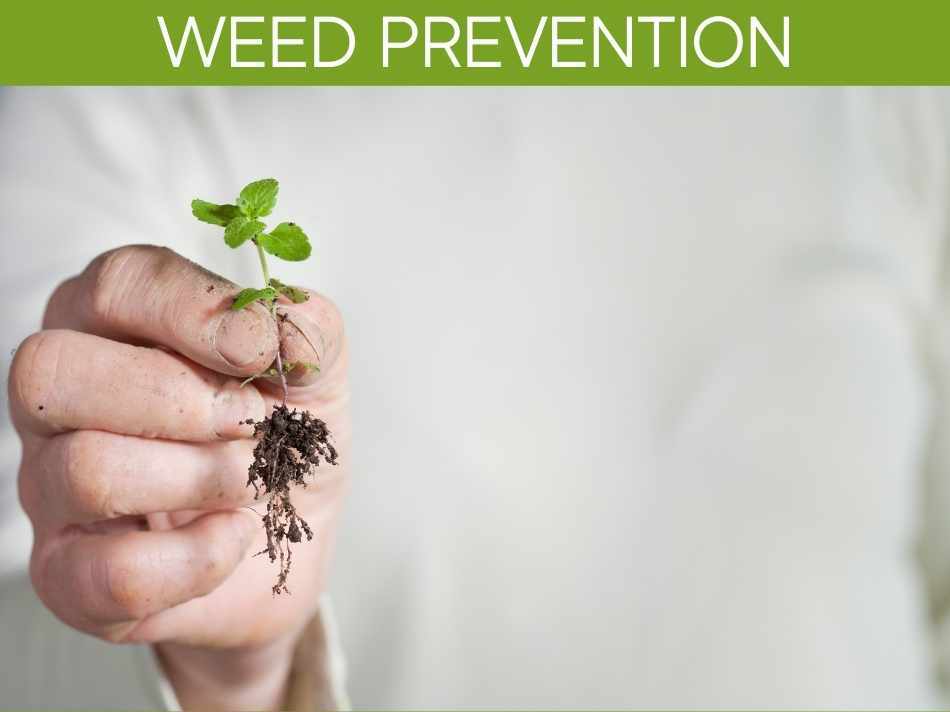
Weeds are the plant version of pests, and lining can help weeds from sneaking up into your garden bed.
The lining will typically block weed growth from the soil underneath your bed.
This saves you a lot of time, frustration, and pain because you won’t have to waste your energy pulling weeds out of your bed.
Retaining soil
Having a liner in place will help you retain the soil in your garden bed.
This means that you won’t have to add new soil as often.
When you don’t have a liner, the soil in the garden bed can get displaced and can also sink into the soil underneath the bed more quickly.
Also, if your soil is retained, then the nutrients in your soil are also retained for longer, which is great for your plants!
Preventing chemicals from seeping into soil
Especially if you’re growing produce, you’ll want to take care to make sure that chemicals aren’t able to seep into your soil.
Typically, chemicals come from treated materials used to build the bed.
So if you use untreated wood, this isn’t as much of a concern.
If you used treated wood or another treated material to construct the walls and base of your bed, lining your bed will prevent chemicals from seeping into your soil.
Drawbacks of lining
As with any gardening technique or process, there are some drawbacks to lining your beds as well.
Keeping these in mind will help you decide if lining your raised bed is the right choice for you.
Potential drainage issues
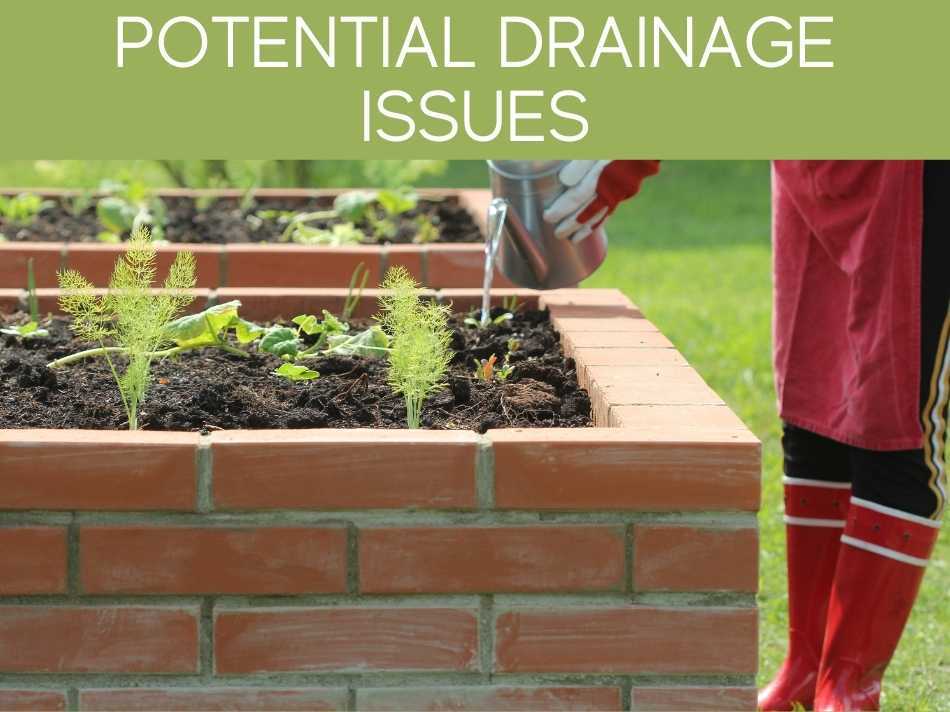
If you choose to line your bed, you may run into issues with water drainage.
Excess water that the soil doesn’t absorb would usually just seep into the soil underneath your bed.
But with a liner, the water often can’t get through, and your plants can drown.
If you have a good gauge of how much water your plants need, you’re unlikely to overwater them.
But drainage is definitely an issue when it comes to lining.
Damage to liners
Some lining materials are more durable than others, but regardless, you may have to deal with damage to your liners.
Depending on which material you choose and also how often you’re digging in the garden bed, your lining will need to be replaced.
And as you can imagine, that’s going to be a pain when you’ve already laid your soil and planted your garden.
Difficulty with replacing
As we mentioned above, lining materials will need to be replaced every so often.
This can be frustrating and time-consuming when you’ve already planted your garden.
And this is one of the reasons some gardeners decide that it isn’t worth it to line their beds.
Picking a more durable material (more on that below) and digging through your garden as infrequently as possible will increase the lifespan of your liner.
This way, you should only have to check it between growing seasons, and you won’t disturb your plants.
Potential for rotting
Many people build their garden beds out of wood, and there is always potential for rotting.
However, using a liner might cause the wood to rot more quickly because of the water retention.
This is mostly an issue for gardeners who have built their beds out of pine because this material rots relatively quickly anyway.
If you give your plants the right amount of water, this shouldn’t be too much of an issue overall, but it’s good to keep in mind.
Should I put landscape fabric under a raised bed?
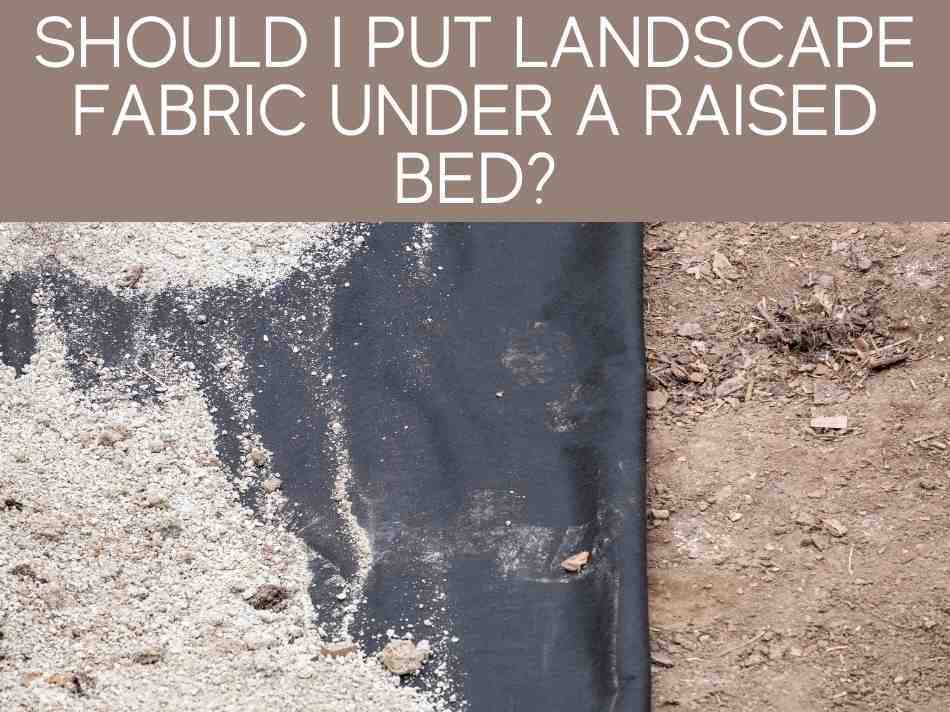
Landscape fabric is one of the most popular material for garden bed lining. It has its pros and cons, but most gardeners who line their beds find that the benefits outweigh the drawbacks.
The most common use for landscape fabric is weed control, so if you have weeds trying to sneak their way into your garden bed, landscape material should be great for you.
It’s also inexpensive yet durable, so you’ll get a long-lasting material without breaking the bank.
Lastly, landscape material retains water, so you don’t have to water as often. Any time we can save on our water bill is a win, right?
Just remember to be careful of overwatering!
The main drawback of landscape fabric is that as it blocks weeds from pushing through, it also blocks nutrients from getting through the soil underneath your bed.
This means that you’ll have to add your own nutrients, and you may have to add them more often than you would without the lining.
Landscape fabric also becomes less effective over time, especially if you dig through your garden to plant new plants or produce frequently.
This can cause holes to form in the fabric.
Should I line my raised bed with plastic?
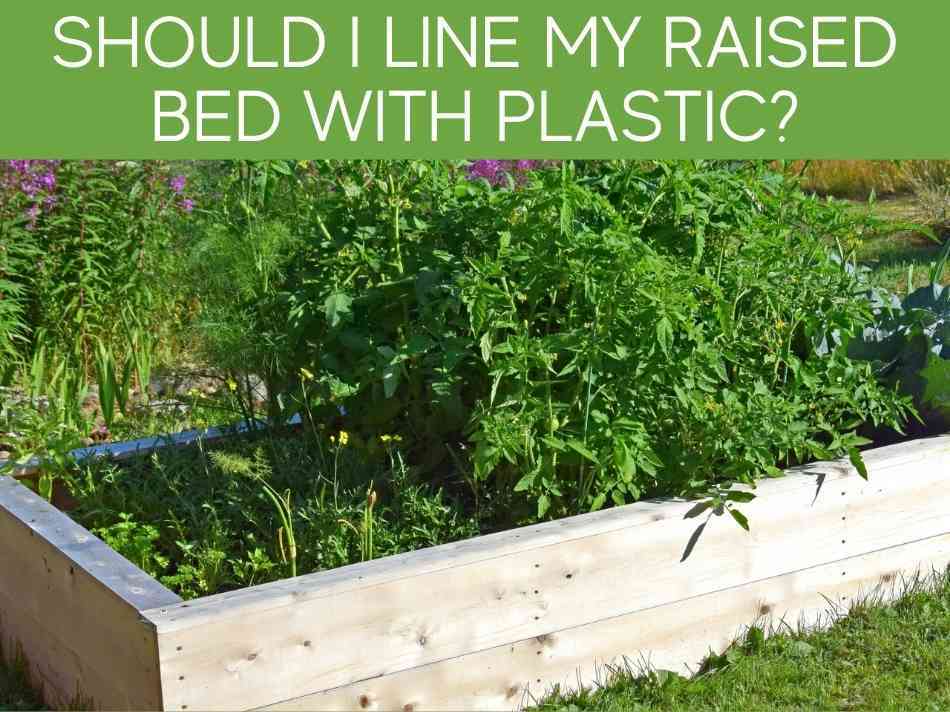
Plastic is a popular material because it’s so inexpensive and easy to find, but we would not recommend using plastic if you have access to another material.
Plastic retains too much water and prevents drainage, so plants are at risk for drowning, especially in rainy areas.
It also breaks down over time and is difficult to remove because it comes apart into small pieces in the garden bed and is not biodegradable.
Lastly, it shares the trait with landscape fabric of preventing nutrients from traveling through soil underneath the bed into the soil in the bed.
You can make plastic work, but it’s best to use a different material.
That said, there is one situation where you DO want to line your raised bed with plastic: when your raised bed is made from pressure-treated lumber, creosote-impregnated wood (like railroad ties), or other toxic materials.
For those wood materials, especially if your raised bed will contain vegetables, using a plastic lining can reduce or prevent toxic chemicals from leaching into your garden soil.
Fortunately, there are better alternatives for building materials for raised beds.
Check out our complete articles on:
Should I put weed barrier under my raised bed?
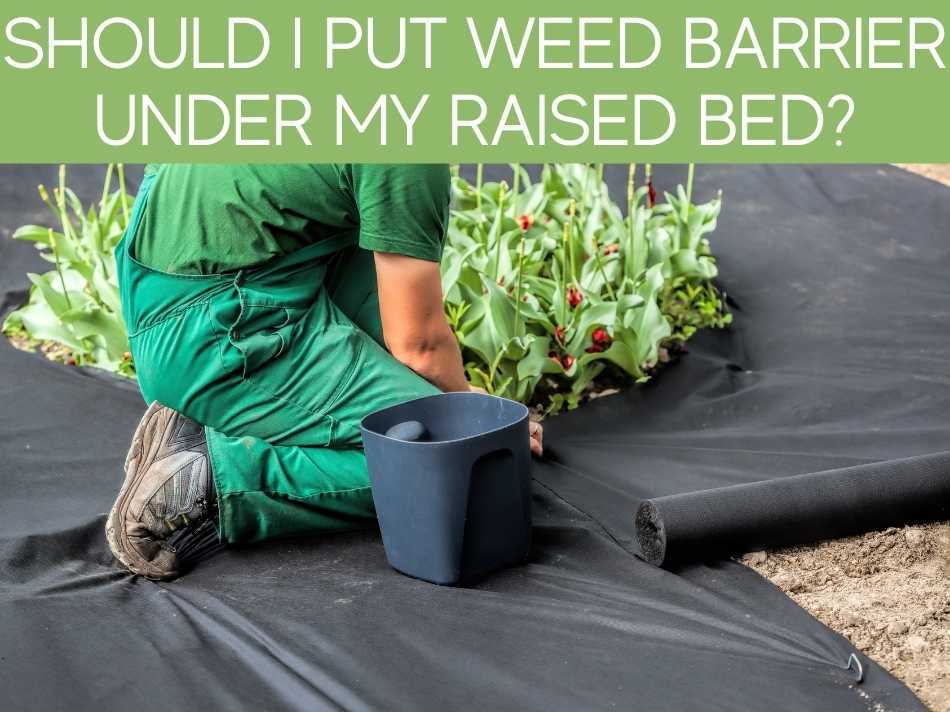
Weed barrier is a broad category that includes any material whose main purpose is to prevent weeds from cropping up.
The two most popular weed barriers are landscape fabric, discussed above, and black plastic weed block.
If weeds are a major problem for you in your gardening area, using weed barrier is a good idea and will definitely help.
Landscape fabric will be better for water drainage than black plastic weed block, so keep that in mind, but either material will help you take care of those pesky weeds.
Should I put gravel under a raised garden bed?
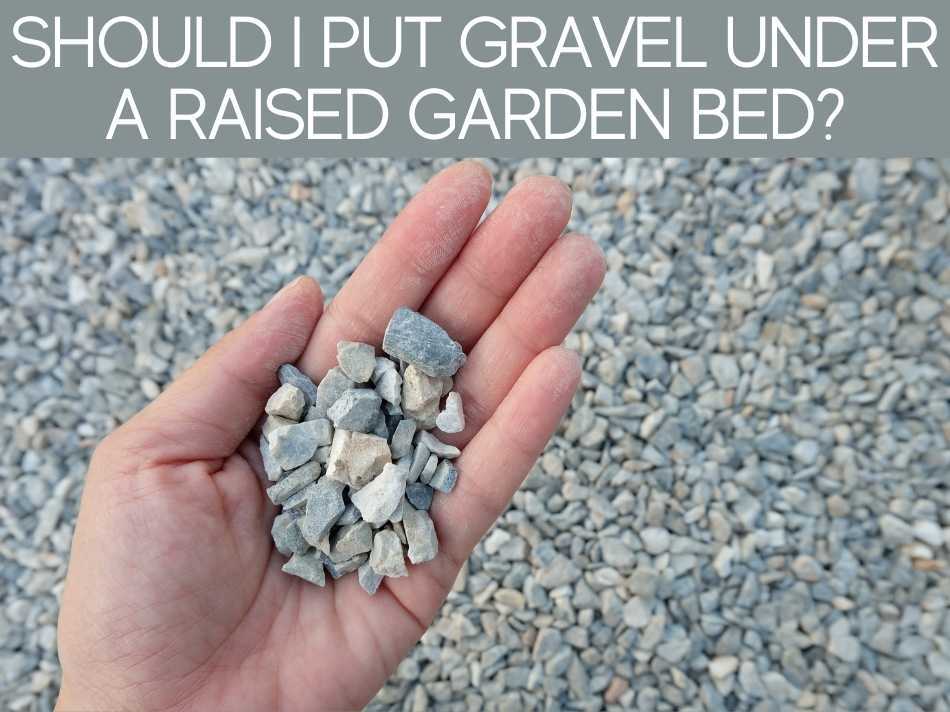
If you live in a rainy area or tend to water your plants a lot, gravel is a great option for lining your garden bed.
Its main purpose is to help with excess water drainage.
Because it is not a solid material and there will be small spaces in between gravel pieces, weeds will be able to sneak through more easily than they would with other materials.
However, gravel will still slow their growth.
Keep in mind that even if you do use gravel, it’s still important to avoid overwatering!
Should I put cardboard in raised beds?
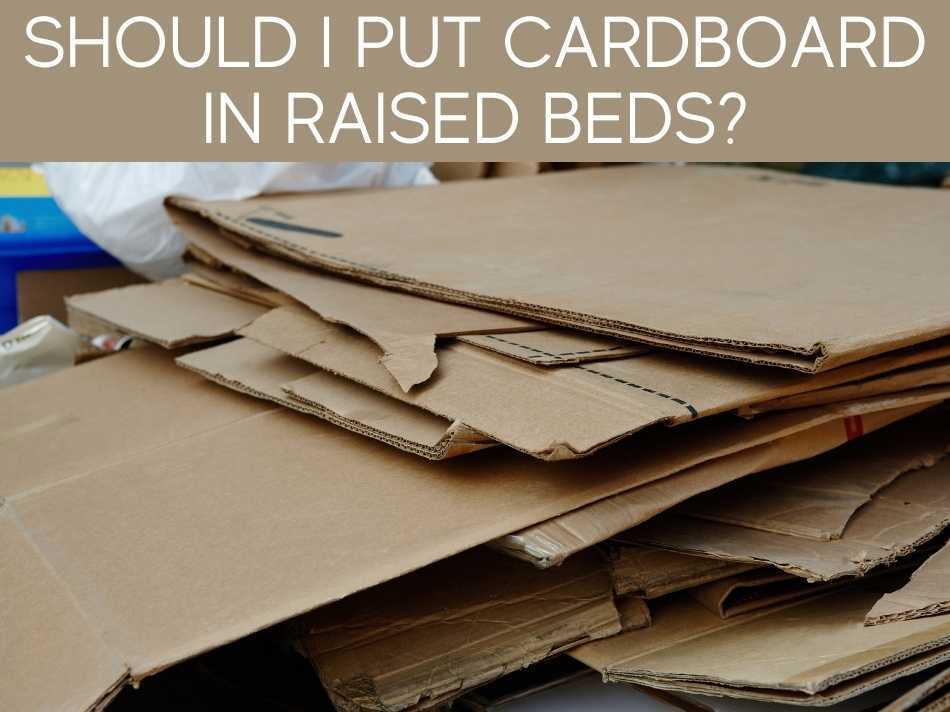
Cardboard can be a good, relatively sustainable material you can use to line your garden bed.
It dissolves naturally over time, and it also provides nutrients to the soil as it dissolves.
This means you are reusing a material and then turning it into something new!
The only drawback to cardboard is that it dissolves relatively quickly, so you’ll have to replace it more often than you would other materials.
Keep in mind though, that you typically won’t know what chemicals might be in the cardboard itself.
And, those chemicals can leach into your soil.
Steps for lining your raised bed
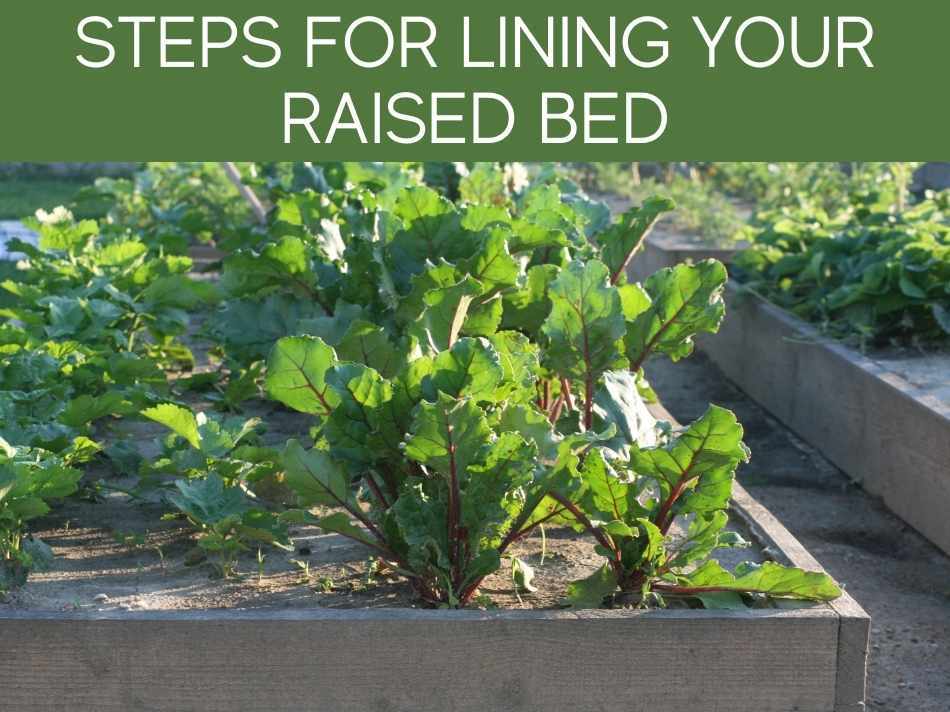
If you’ve made it this far, you’ve likely decided that lining your garden beds is the right choice for you!
Here’s a quick rundown of what you’ll need to do to actually install your lining.
You’ll need a tape measure, scissors, your lining material, and a shovel if you’re using gravel.
- Measure your bed. This will allow you to cut your material accurately or, if you’re using gravel, to buy the right amount for your bed.
- Choose your lining material. The materials we’ve discussed above can all be found at a hardware store, and if you’re using cardboard, you may be able to pick some up for free from your local grocery store. It’s always good to get a little more material than you think you need, just in case.
- Cut your materials to size according to your measurements from Step 1, unless you’re using gravel. Gravel folks, you can skip to step 4. You can either line just the bottom of your bed or the bottom and the sides. If you’re using treated wood, we’d recommend lining the sides as well because the lining can help prevent chemicals from seeping into your soil. It’s always good to make your liner a bit bigger initially – you can always cut more, but you can’t make a small piece bigger!
- Line your bed. If you’re using gravel, use your shovel to create a smooth, single layer of gravel across the bottom of your bed. If you’re using any of the other materials, carefully place the material in the bed and make sure it covers at least the entire bottom of the bed.
- Step 5 is the most exciting – add your soil and plant your garden! Be careful as you add your soil that your lining stays in place. Your garden is ready to thrive!
Wrapping up
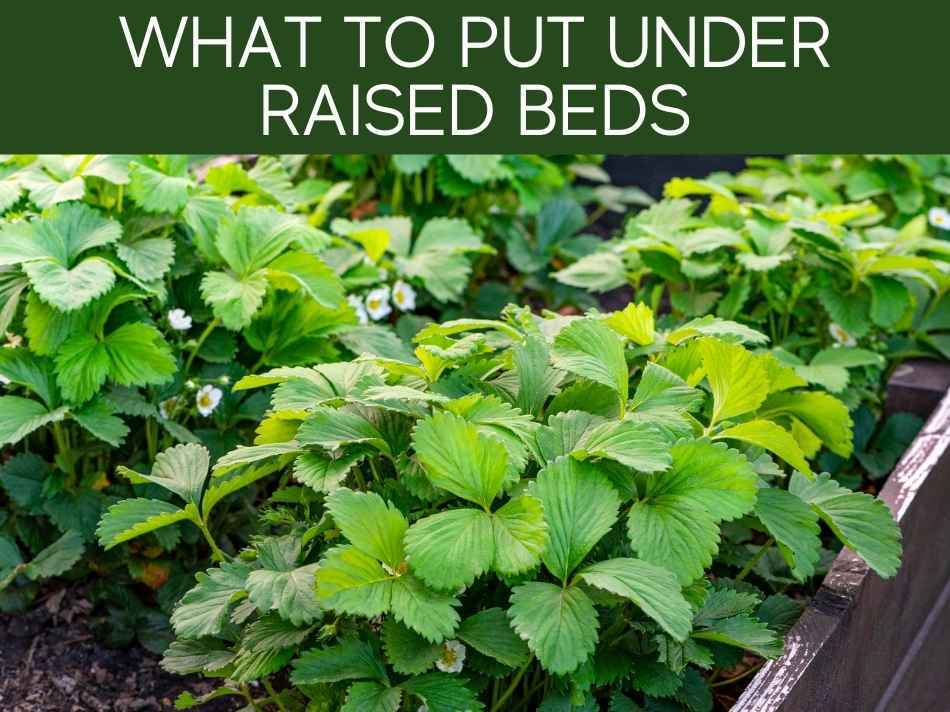
So there you have it–the pros & cons of whether to line a raised bed, along with the most common materials for linings.
Now, it’s up to you to decide for your situation what the best option is.
